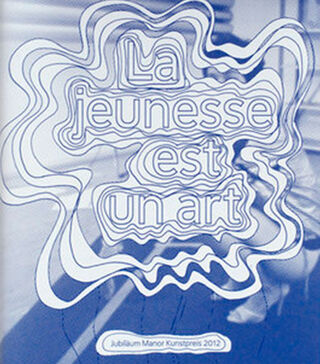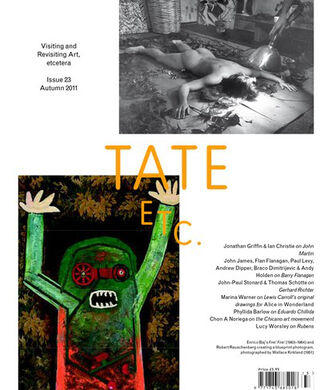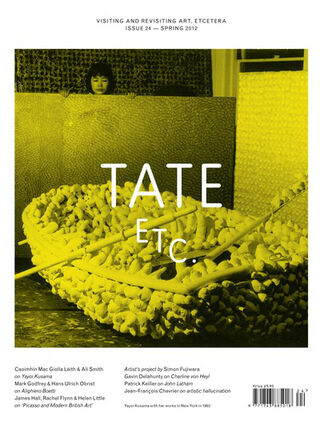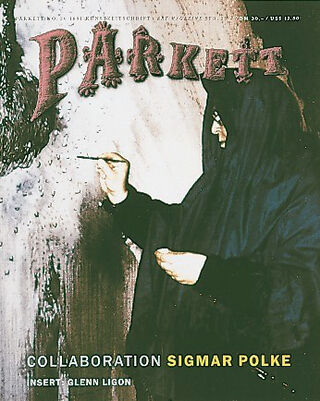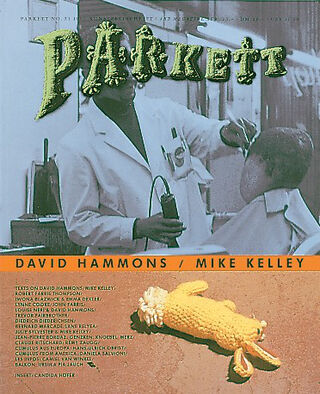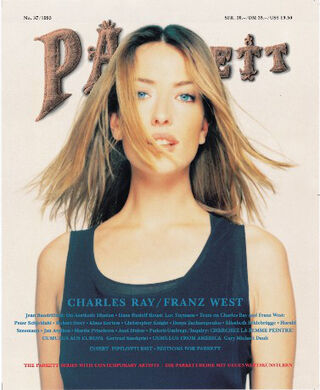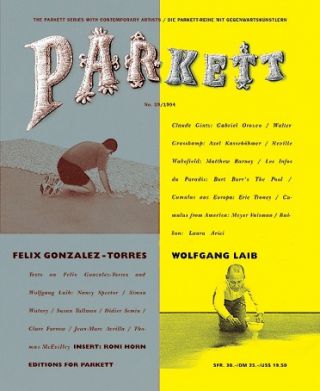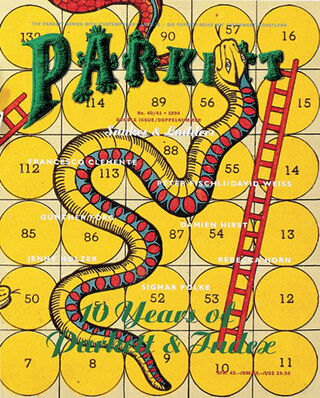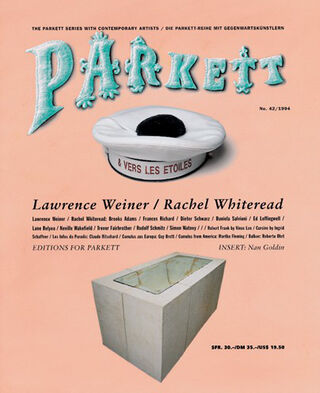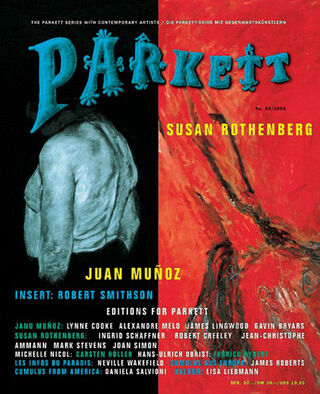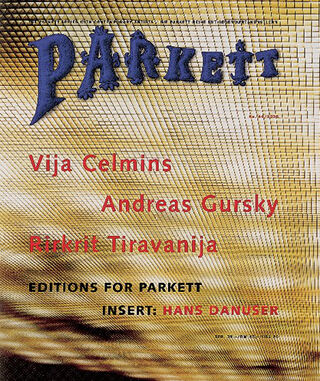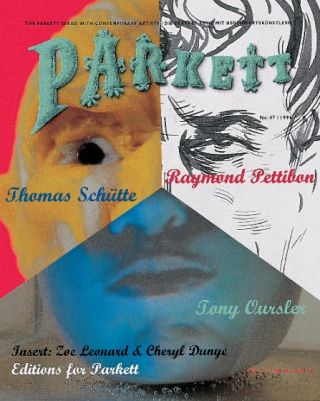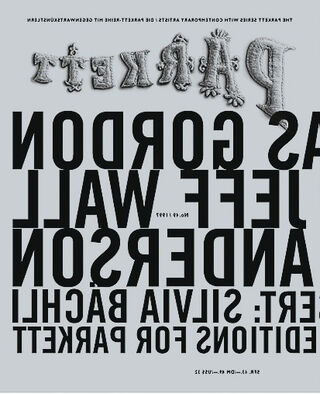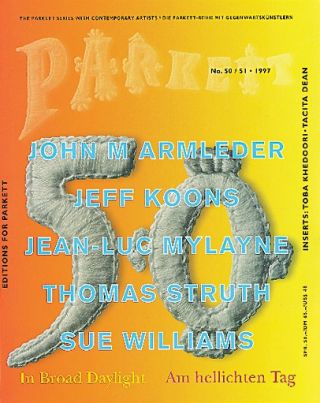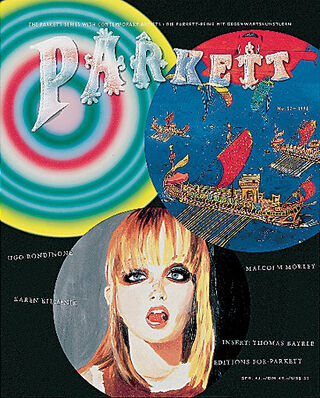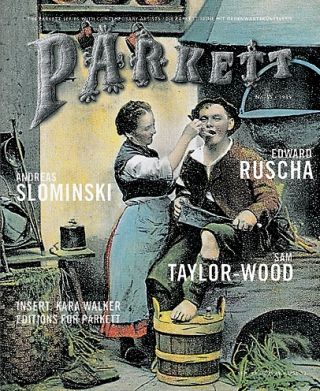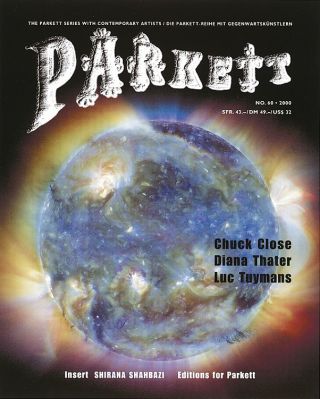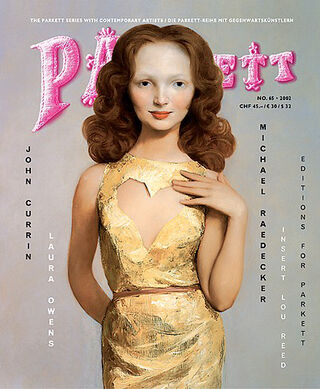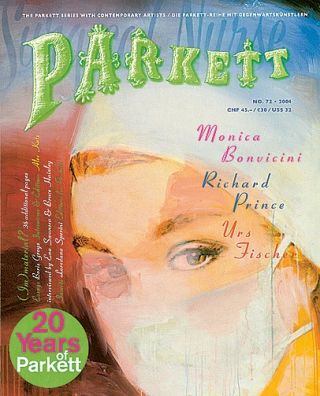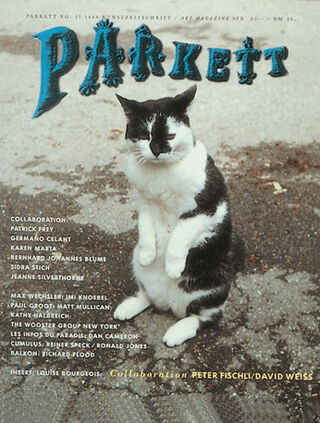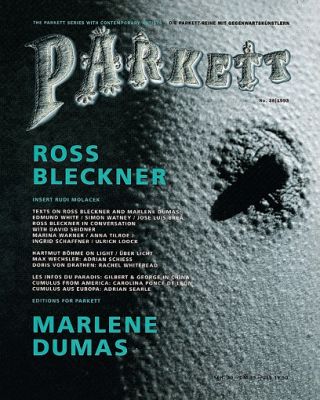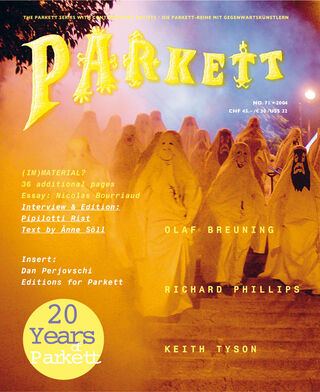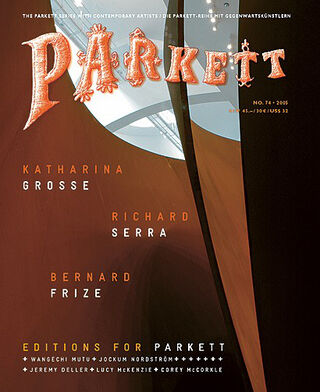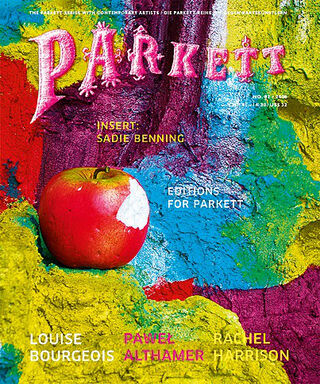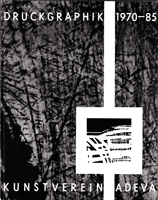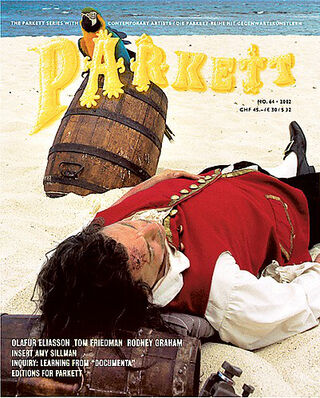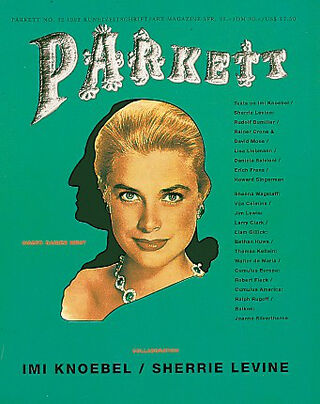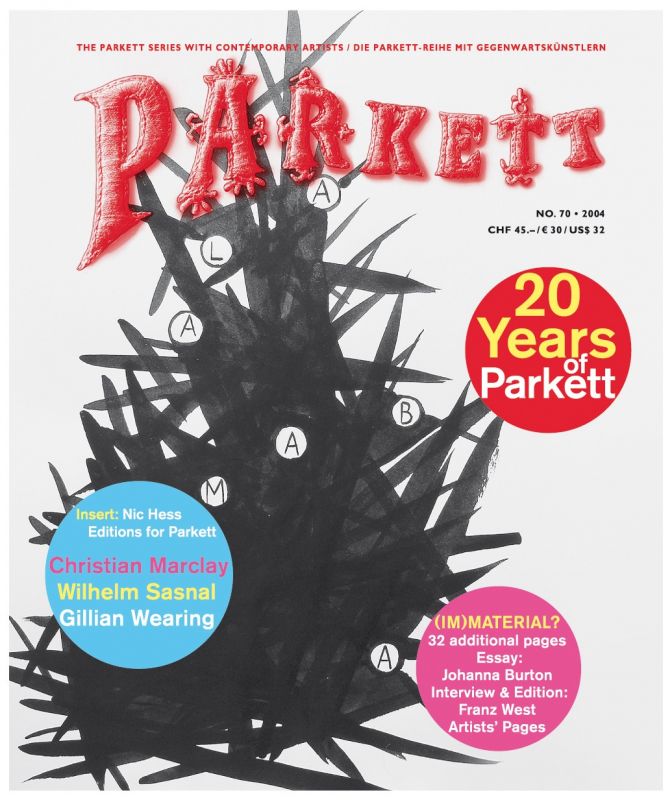
Soft Cover, German, Thread Stitching, 264 Pages, 2004
Parkett No. 70 / 2004
availability unknown, if interested please write an email
Our core objective, since we first started 20 years ago, has been to work closely with contemporary artists, for we consider them partners in a joint venture. They, in turn, have consistently demonstrated their commitment in collaborations that contribute substantially to the renown of Parkett.
For the 70 volumes published over the past 20 years, our artists have designed and created 150 editions and 62 inserts. An international roster of eminent writers has played an equally substantial role in defining the character of Parkett. Well over 1000 essays, translated from a variety of languages into German and English, testify to a sustained and dynamic transcontinental exchange.
What is different now than it was two decades ago? E-mail and the electronic highway have, of course, profoundly changed day-to-day production, but what about art? To celebrate our birthday, we have decided to give our readers––and ourselves––a booklet within a book, which will be bound into each of our anniversary issues. Entitled (IM)MATERIAL?, it will debate the current concept of material in art, beginning with Johanna Burton’s discerning essay on “The ‘Urmaterial’ Urge.”Franz West follows suit (in a conversation conducted by e-mail), discussing not only his archaic relationship to materials but also their ability to embody or even define linguistic and psychological content. He deliberately stretches the concept of material to include not only matter that can be touched. What could be more appropriate, then, but Franz West’s Special Edition for our anniversary: a bookcase with room for 20 years of Parkett, past and future.In response to our invitation, many former collaboration artists have explored “Parkett” as a sourcebook of associations in order to design a page for our anniversary feature––a project to be continued in the next two issues as well.We take pleasure in imagining what it would be like to listen, with a similar, well-trained meta-view, to a birthday serenade by Christian Marclay while studying the contributions to this volume of Parkett. Music as absence, but also as potential, is a salient aspect of Marclay’s work. Physical existence, along with all the masks and clothing that disguise its vulnerability, is the stuff of Gillian Wearing’s oeuvre. Her masks are indeed frightening instruments whose existential tones bear witness to the shrill dissonance of identities. As Gordon Burns puts it, “We are all creatures of the electronic limbo”, a comment that might also be applied to Wilhelm Sasnal. Sasnal’s painting shows such an intense and uninhibited commerce between imagery, media and styles that the question of origin fades into distant obscurity. Wanting to trace his motifs or modes of representation to specific sources is, therefore, an antiquated enterprise. Nothing is fixed; everything flows into the darkly forbidding beauty of painting which is a law unto its own. Language: English/German

